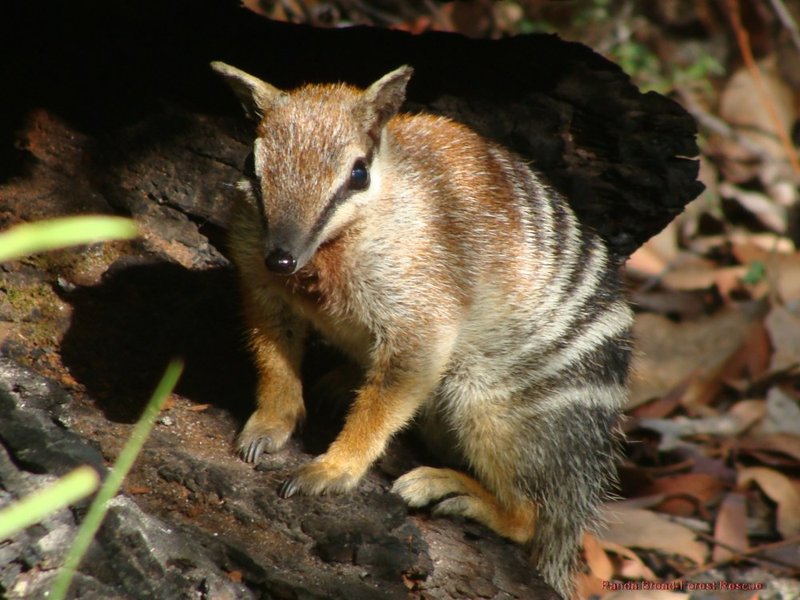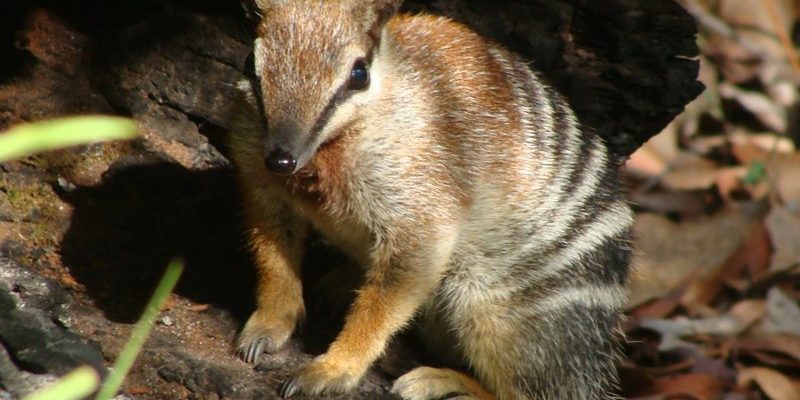
Imagine you’re on a delightful hike through the Australian bush, surrounded by the sound of chirping birds and rustling leaves. All of a sudden, you spot a numbat foraging for termites in the underbrush. It’s adorable, right? But before you rush over to pet it, you might need to know a bit more. Here’s the thing: while numbats are not aggressive, understanding their nature can help clarify any concerns.
Let’s explore whether the numbat can be dangerous to humans, looking at its behavior, habitat, and interactions with people.
The Numbat: A Unique Marsupial
Numbats are fascinating creatures. They’re small, with a body length of about 20-30 inches, and a tail that adds another 8-10 inches. Their striking striped coat, which helps them blend into the bush, makes them a treat for the eyes. You might find them darting around in search of their favorite snack: termites. That’s right, these little guys are *specialized* insect eaters!
You might be wondering, why do we care about a creature like the numbat? Well, it’s an important part of its ecosystem. Numbats help control termite populations, and their existence is a key indicator of the health of their habitat. Plus, they’re delightful to observe! However, despite their intriguing nature, they have almost been wiped out due to habitat loss and introduced predators like foxes.
Are Numbats Dangerous to Humans?
Honestly, the answer is no. Numbats are not dangerous to humans at all. They are shy, solitary animals that prefer to stay away from people. Their first instinct when they feel threatened is to run and hide, not to attack. This behavior is common in most wildlife; many animals would much rather avoid confrontation than engage in a fight.
If you’re lucky enough to encounter a numbat, it’s more likely to scamper away than to display any kind of aggression. So, if you’ve been concerned about the potential danger of meeting one in the wild, you can breathe easy. The numbat is far more interested in munching on termites than making any trouble!
Potential Risks: When Interaction Occurs
While numbats themselves are not dangerous, *any* wild animal can pose risks if provoked or if they feel cornered. In rare situations, if a numbat is trapped or scared, it might bite. But you’d have to really push them into that position. Always remember that they are wild animals, and observing them from a distance is the best course of action.
Additionally, it’s essential to be cautious around any wildlife (not just numbats). Accidental encounters can sometimes lead to scratches or bites. That’s why keeping a respectful distance is crucial. Animals, even those that seem harmless, should always be treated with respect.
Habitat and Behavior: Understanding Their World
Numbats are primarily found in eucalyptus forests and woodlands in Western Australia. They’ve adapted beautifully to their environment, often hiding in logs or under leaf litter. Their nocturnal habits also affect how they interact with other creatures and humans. Although they are mostly active during the day, they tend to stay hidden.
Their diet consists almost entirely of termites, which they skillfully extract using their long, sticky tongues. Here’s a fun fact: a single numbat can consume up to 20,000 termites in a day! This specialization makes them unique and highlights their role in maintaining the balance of their ecosystem.
Understanding their behavior can deepen your appreciation for these creatures. Knowing that they aren’t aggressive and prefer solitude allows us to observe them without fear, revealing a glimpse into their small but significant role in the wild.
Conservation Status: Why It Matters
Unfortunately, numbats are classified as *endangered*. Their numbers have drastically declined because of habitat destruction and predation by introduced species. That’s why conservation efforts are critical. Protecting their environment not only helps numbats but also preserves the biodiversity of the region.
By supporting conservation initiatives, we can help ensure that future generations can experience the joy of seeing these unique marsupials in their natural habitat. Every small effort counts, whether that’s participating in local clean-up drives or supporting wildlife protection laws.
So, can the numbat be dangerous to humans? The short answer is no. They are gentle, shy creatures that would rather foraging for termites than interacting with us. By understanding and respecting their natural behaviors and habitats, you can enjoy the beauty of this unique marsupial without worry.
In the big picture, every animal plays a part in our ecosystem, and the numbat is no exception. So, the next time you find yourself wandering through the Australian bush, keep your eyes peeled for these delightful creatures. Just remember to appreciate them from a distance, respecting their space and the crucial role they play in nature.

